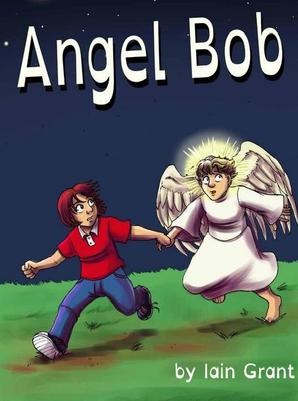
The format is ideal for writers who are limited on time, allowing you to craft a story in the time-frame of a single commute. Flash fiction is also ideal for new writers to help them build their confidence and skill-set before committing to longer pieces.
One final perk is that many online short story competitions ask for pieces of 500 words or less. Therefore, if you intend to enter competitions and win a little money, it helps to have a catalogue of flash fiction pieces to draw upon.
However, flash fiction can also be quite tricky so here are five tips to help you on your way.
1. Plot Lite - there is no time for a complicated narrative. Your piece of flash fiction has to be very light on plot, with a small number of major characters. It therefore helps to focus on a well-known archetype, a scene which we have seen time and time again. The audience can then fill in a lot of the details themselves. How you make the archetype unique will depend on your ability with language and what clever twists you have up your sleeve.
2. All Show, No Tell - there is no time for tell. You need to show the entire scene in real-time as it happens. Your word count is too limited for jumps in time or cuts to different locations. Unfold the scene from start to finish.
3. All Killer, No Filler - you need to be brutal with your editing. A first draft of flash fiction will always be too long. Once you have figured out the USP of your story, you can then go back and trim unnecessary details. Begin in the heart of the action (in media res) and make every sentence count.
4. Style Over Substance - your plot will be thin so make your story worthwhile with an arsenal of powerful language. Poetry deserves a place in every piece of prose, particularly flash fiction where there is little time for characterisation and depth. Spend time on those similes and metaphors. Ensure there is not a single word out of place.
5. The Punchline - a surprising ending is a prerequisite for a short story, even flash fiction. If your story is based on a well-known archetype then there has to be a twist to turn the archetype upside-down and offer a slice of originality. Choose your punchline before you begin to write. In many ways, flash fiction is little more then a clever idea that has been fleshed out into a story, so start with the twist and work backwards.
For an example of flash fiction, you can read my horror story, Munchkin, below. This is due to appear in my short story collection due out at the end of October.
_______________________________________________________________________________________________________________
‘Daddy!’
Christ, not again. Trevor’s daughter was having more nightmares. Worst of all, it was his turn. It always seemed to be his turn at 2am. Never mind that he had work in the morning.
Trevor stumbled down the corridor to his daughter’s bedroom, still half-asleep. It wasn’t the first time he had been dragged out of bed for this nonsense. Hell, it wasn’t even the first time this week.
He found his daughter whimpering under her In The Night Garden duvet. She was getting too old for that thing and she was certainly getting too old for this.
‘Munchkin, this has to stop,’ he groaned. ‘You’re seven now. Big girls aren’t supposed to be afraid of monsters.’
The incessant sobbing continued so Trevor did the obligatory checks. He stumbled around her room like an idiot, shielding his eyes from the garish pink of her night-light. He swore that was half the problem. It gave her room the ultraviolet glow of a crime scene – the sort forensic teams use to detect splatter marks.
And it caused so many damn shadows. The light stretched and distorted the shadow of her mobile until it looked like a mangled birdcage. Trevor had smashed her first night-light. He tore it from the wall and heeled it. But that solved nothing. She had refused to leave her parents’ bed until Kim bought her a new one.
‘Look munchkin, nothing behind the curtains.’ Just a bunch of Barbie dolls, plastic and unblinking, as if coated in embalming fluid.
‘And nothing under the bed.’
Except dust and lint, he added to himself. When did Kim last vacuum in here? He was surrounded by useless women.
Finally some movement: a pudgy arm popped out from under the covers, pointing across the room. ‘There’s a monster in my cupboard,’ said a voice deep beneath the duvet. It sounded like she was speaking through a mouthful of snot. Trevor was repulsed. For some reason, it made his temper flare.
‘No, there bloody isn’t!’ He crossed the room in two strides and threw open the cupboard doors.
He looked inside and his heart stopped. His daughter sat inside. She was shivering in a pool of blood, pale and terrified. Her left arm was missing. It had been ripped off at the shoulder.
‘Daddy, there’s a monster in my bed,’ she whispered.
Before Trevor could turn around, or even scream, he was shoved forward. He slipped in the blood and fell on top of his daughter.
‘NO!’ He heard the cupboard doors slam shut behind him. Whatever had pushed Trevor had followed him inside.
Now there really was a monster in the cupboard.
And it was hungry.

